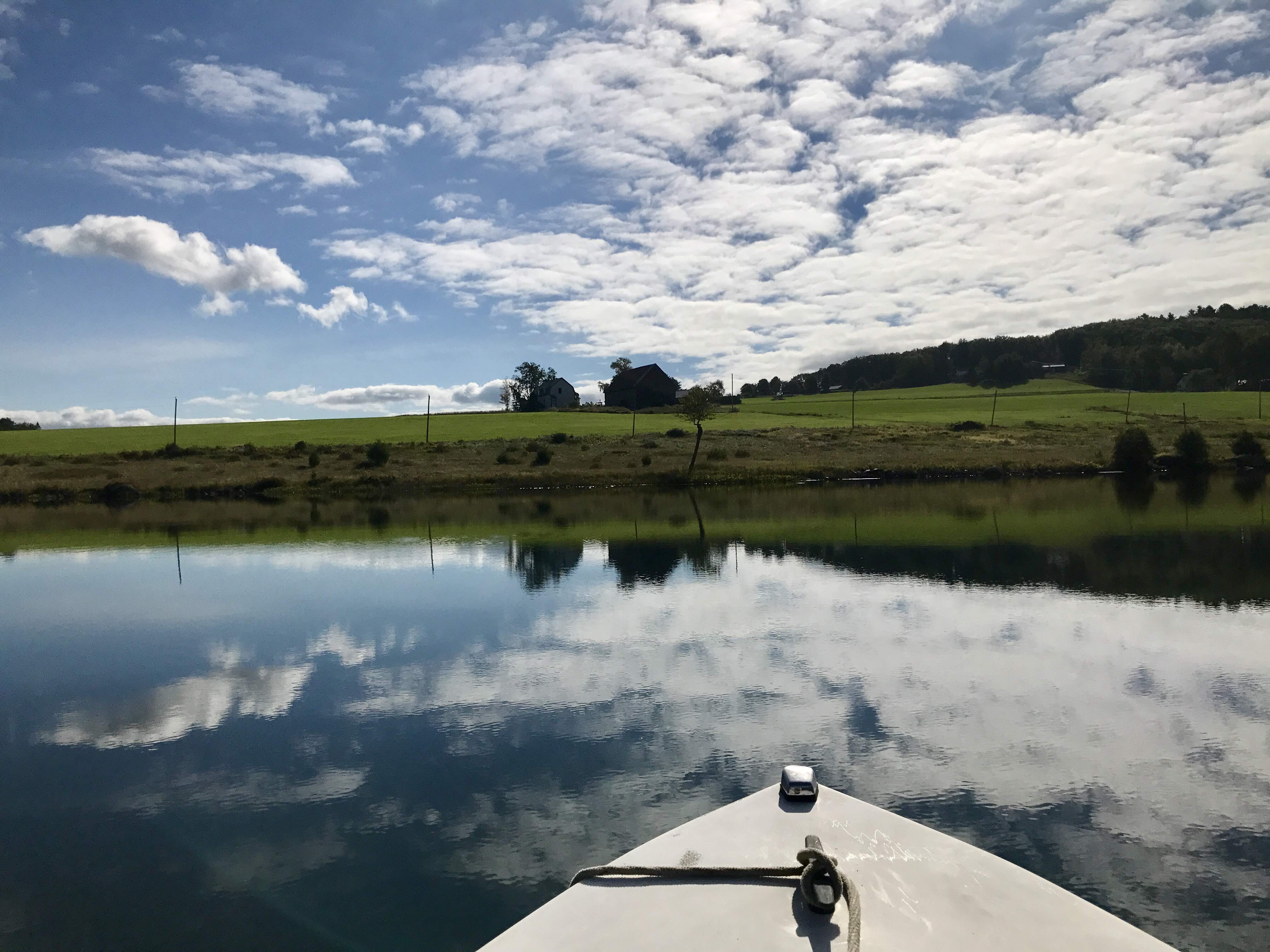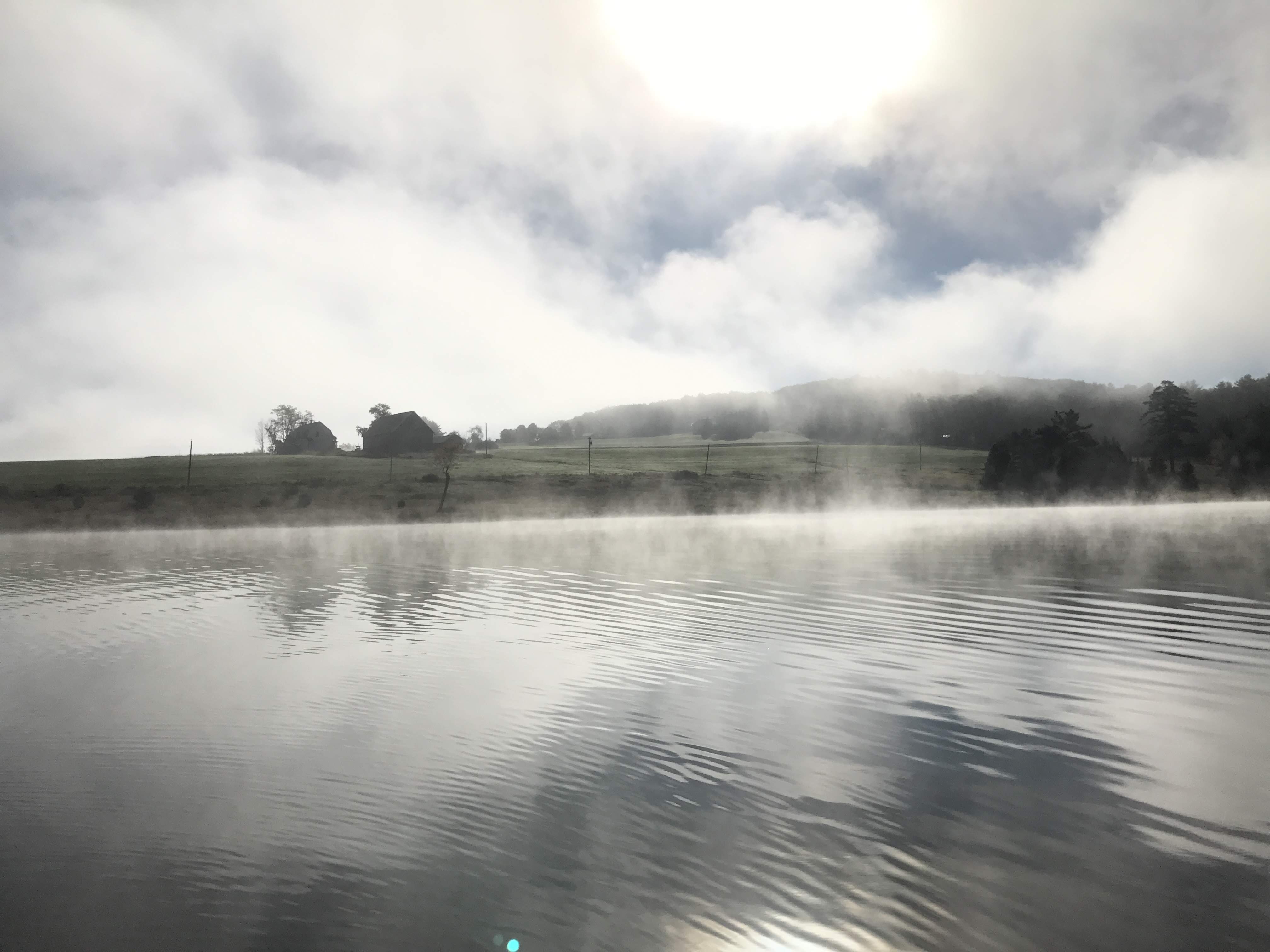
After many years of suffering from algal blooms, poor water clarity, and other challenges, Ticklenaked Pond was removed from Vermont’s impaired waters list for the 2020 update. The Pond has experienced five consecutive years of water quality improvements according to Lay Monitoring Program data, and the delisting made Ticklenaked Pond the first lake or pond in Vermont to be restored to EPA-mandated phosphorus reduction goals.
The pond’s water quality improved significantly thanks to the dedication and hard work of the Ticklenaked Pond Association to reduce runoff and nutrient pollution from the lakeshore and the watershed and a 2014 lake treatment funded by the Vermont Department of Environmental Conservation (DEC).
“The lake treatment represented the culmination of over a dozen years of efforts by the Ticklenaked Pond Association, and others who love this gem of a lake, to improve water quality,” said Sally Wilson, the Association’s Chairperson. “When the lake treatment took, water visibility improved clarity within days from 5 feet to 18 feet. We continue to limit the spread of Eurasian Water Milfoil, and with improved clarity we found native species were able to return and compete. Additionally, fish populations improved, and much to our delight, loons returned to our lake over the last few years and are producing chicks. All this contributes to the public enjoyment of Ticklenaked Pond for swimming, fishing, boating and other recreation. We are grateful to the DEC and all who made this possible.”
In 2005, the DEC began a comprehensive water quality analysis to identify sources of phosphorus entering the pond, set phosphorus reduction targets, and drafted a three-phase action plan to guide water quality restoration efforts.
The Ticklenaked Pond Association, with support from the DEC, began to implement this plan in 2010, and quickly succeeded in reducing the amount of phosphorus reaching the lake from different land use activities in the pond’s watershed.
“A collaborative effort carried out by the Ticklenaked Pond Lake Association, camp owners, the town, and farmers in the lake watershed continues to help reduce driveway erosion, stormwater and agricultural runoff, and road erosion issues. By implementing no-mow lakeshore zones, better road practices, cover cropping, nutrient management plans, and barnyard practices, we “checked off” source after source from the list generated by the action plan,” says DEC Watershed Planner Danielle Owczarski.
In 2014, the Town of Ryegate and Ticklenaked Pond Association received an Ecosystem Restoration Grant from the DEC to implement an alum treatment for the pond, which was the last remaining major cleanup action. Alum works by permanently binding with phosphorus in the water column and sediments, rendering it unavailable for biological use. The alum treatment quickly began lowering phosphorus concentrations in the pond. The Ticklenaked Pond Association, Town of Ryegate and local farmers have also worked to prevent phosphorus from reaching the pond and accumulating on the pond’s bottom.
“Based on our monitoring data and efforts of local actors, we are optimistic that the alum treatment will remain effective for many years to come, and if the treatment continues to be complemented by efforts to reduce phosphorus pollution from the watershed, Ticklenaked Pond will be a great place for Vermonters to enjoy clean water and excellent recreation opportunities,” said DEC Lakes and Ponds Program Manager Oliver Pierson.
Resources and Reports
VT DEC Intergrated Watershed Information System (IWIS) online data portal
(search Ticklenaked Pond monitoring sites)
VT DEC Lake Score Card | Lake Monitoring and Watershed Land Use Reports
(scroll down to Ticklenaked Pond)
VT DEC Lay Monitoring Program | Volunteer Lake Monitoring Reports
(scroll down to Ticklenaked Pond)
VT DEC LaRosa Partnership Program | Volunteer Tributary Monitoring Reports
(select Caledonia County NRCD)
2024 Ticklenaked Pond Water Quality - Comparison to Before and After 2014 Alum Treatment.pdf (presentation)
2020 Ticklenaked Pond Achieves Important Water Quality Improvement Milestone
2019 Ticklenaked Pond Pre vs Post Alum Treatment WQ Assessment Summary
2014 Aquatic Nuisance Control Permit for Alum Treatment in Ticklenaked Pond
2014 Ticklenaked Pond Alum Treatment Project Description
2011 Ticklenaked Pond Loading and Management Analysis
2010 Ecosystem Restoration Grant: Control of Internal Phosphorus Loading to Ticklenaked Pond
2009 Ticklenaked Pond TMDL Fact Sheet
2008 Ticklenaked Pond Phosphorus Action Plan
